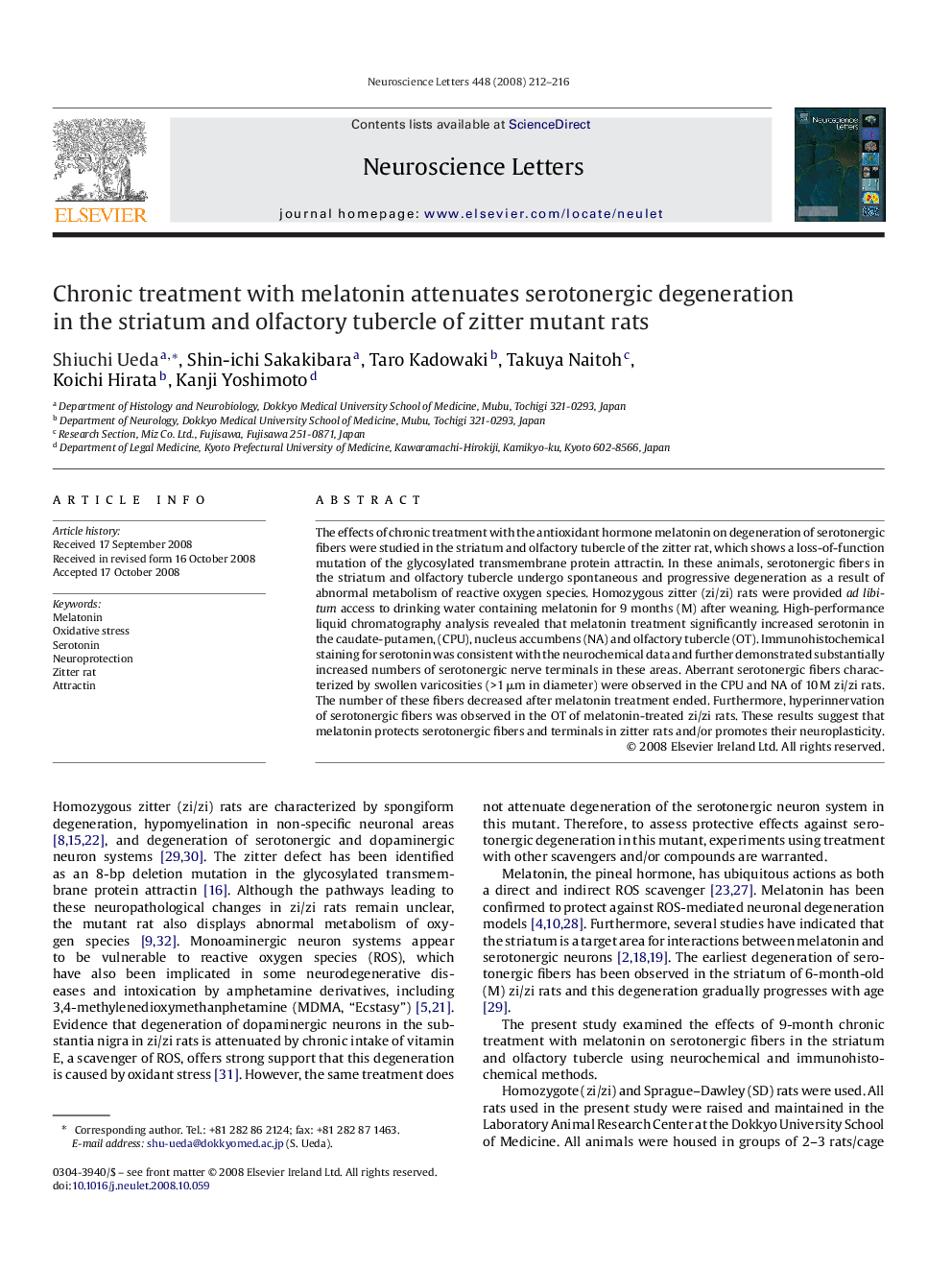| Article ID | Journal | Published Year | Pages | File Type |
|---|---|---|---|---|
| 4347735 | Neuroscience Letters | 2008 | 5 Pages |
Abstract
The effects of chronic treatment with the antioxidant hormone melatonin on degeneration of serotonergic fibers were studied in the striatum and olfactory tubercle of the zitter rat, which shows a loss-of-function mutation of the glycosylated transmembrane protein attractin. In these animals, serotonergic fibers in the striatum and olfactory tubercle undergo spontaneous and progressive degeneration as a result of abnormal metabolism of reactive oxygen species. Homozygous zitter (zi/zi) rats were provided ad libitum access to drinking water containing melatonin for 9 months (M) after weaning. High-performance liquid chromatography analysis revealed that melatonin treatment significantly increased serotonin in the caudate-putamen, (CPU), nucleus accumbens (NA) and olfactory tubercle (OT). Immunohistochemical staining for serotonin was consistent with the neurochemical data and further demonstrated substantially increased numbers of serotonergic nerve terminals in these areas. Aberrant serotonergic fibers characterized by swollen varicosities (>1 μm in diameter) were observed in the CPU and NA of 10 M zi/zi rats. The number of these fibers decreased after melatonin treatment ended. Furthermore, hyperinnervation of serotonergic fibers was observed in the OT of melatonin-treated zi/zi rats. These results suggest that melatonin protects serotonergic fibers and terminals in zitter rats and/or promotes their neuroplasticity.
Related Topics
Life Sciences
Neuroscience
Neuroscience (General)
Authors
Shiuchi Ueda, Shin-ichi Sakakibara, Taro Kadowaki, Takuya Naitoh, Koichi Hirata, Kanji Yoshimoto,
